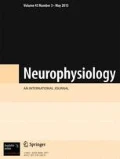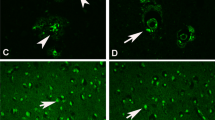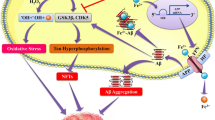Neurodegenerative diseases are characterized by a progressive loss of neuronal structures and functions. Although all biochemical and/or physiological processes are not completely understood, it is known that the main neurodegenerative diseases, like Alzheimer’s, Parkinson’s, Huntington’s, and prion diseases, and also amyotrophic lateral sclerosis (ALS) present certain obvious similarities. Biometal microelements, such as copper, iron, manganese, and zinc, are crucial for many physiological functions, especially in the CNS. Shifts in the amounts of these metals are essential for the development and maintenance of numerous enzymatic activities, mitochondrial functions, neurotransmission, and also for memorization and learning. However, with deregulations in their homeostasis, particularly in those connected with redox activity, there are consequent changes in the ion and microelement balance. This redox activity may contribute to the production of free radicals that can react with various organic substrates, thus generating increased levels of oxidative stress. There is growing evidence that metal microelements play significant roles in the pathogenesis of neurodegenerative diseases. The interaction between metals and CNS proteins is crucial in the development or absence of neurodegeneration. In this way, homeostasis of metal microelements represents a mechanism of extreme importance. Our paper aims at an updated and critical review of the role of the respective metals in neurodegenerative diseases and the main related pathogenic mechanisms.
Similar content being viewed by others
References
M. F. C. Leal, R. I. L. Catarino, A. M. Pimenta, et al., “Lead migration from toys by anodic stripping voltammetry using a bismuth film electrode,” Arch. Environ. Occup. Health,71, No. 5, 300–306 (2016).
K. J. Barnham and A. I. Bush, “Metals in Alzheimer’s and Parkinson’s diseases,” Curr. Opin. Chem. Biol.,12, No. 2, 222–228 (2008).
M. F. C. Leal, R. I. L. Catarino, A. M. Pimenta, et al., “Speciation of copper and zinc in urine – importance of metals in neurodegenerative diseases,” Quim. Nova,35, No. 10, 1985–1990 (2012).
A. Rauk, “The chemistry of Alzheimer`s disease,” Chem. Soc. Rev.,38, No. 9, 2698–2715 (2009).
P. Zatta, D. Drago, S. Bolognin, and S. L. Sensi, “Alzheimer’s disease, metal ions and metal homeostatic therapy,” Trends Pharmacol. Sci.,30, No. 7, 346–355 (2009).
F. Sola Vigo, G. Kedikian, L. Heredia, et al., “Amyloidprecursor protein mediates neuronal toxicity of amyloid β through Go protein activation,” Neurobiol. Aging,30, No. 9, 1379–1392 (2009).
G. Silvestrelli, A. Lanari, L. Parnetti, and F. Amenta, “Treatment of Alzheimer’s disease: From pharmacology to a better understanding of disease pathophysiology,” Mech. Ageing Dev.,127, No. 2, 148–157 (2006).
R. B. Maccioni, G. Farías, I. Morales, and R. Navarrete, “The revitalized tau hypothesis on Alzheimer’s disease,” Arch. Med. Res.,41, No. 3, 226–231 (2010).
H. A. G. Teive, “Etiopathogenesis of Parkinson disease,” Rev. Neurociências,13, No. 4, 201–214 (2005).
D. Weintraub, C. L. Comella, and S. Horn, “Parkinson’s disease – Part I: Pathophysiology, symptoms, burden, diagnosis, and assessment,” Am. J. Manag. Care,14, Suppl. 2, S40–S48 (2008).
T. Togo, E. Iseki, W. Marui, et al., “Glial involvement in the degeneration process of Lewy body-bearing neurons and the degradation process of Lewy bodies in brains of dementia with Lewy bodies,” J. Neurol. Sci.,184, No. 1, 71–75 (2001).
F. Walker,” Huntington’s disease,” Lancet,369, No. 9557, 218–228 (2007).
L. A. Raymond, V. M. André, C. Cepeda, et al., “Pathophysiology of Huntington’s disease: timedependent alterations in synaptic and receptor function,” Neuroscience,198, 252–273 (2011).
U. Jones, M. Busse, S. Enright, and A. E. Rosser, “Respiratory decline is integral to disease progression in Hunting- ton’s disease,” Eur. Respir. J.,48, No. 2, 585–588 (2016).
P. Maiti, J. Manna, S. Veleri, and S. Frautschy, “Molecular chaperone dysfunction in neurodegenerative diseases and effects of curcumin,” BioMed Res. Int.,2014, 495091 (2014).
Y. Hayashi, K. Homma, and H. Ichijo, “SOD1 in neurotoxicity and its controversial roles in SOD1 mutation-negative ALS,” Adv. Biol. Regul.,60, 95–104 (2016).
M. T. Carrì, N. D’Ambrosi, and M. Cozzolino, “Pathways to mitochondrial dysfunction in ALS pathogenesis,” Biochem. Biophys. Res. Commun.,483, No. 4, 1187–1193 (2017).
I. Keskin, E. Forsgren, D. J. Lange, et al., “Effects of cellular pathway disturbances on misfolded superoxide dismutase-1 in fibroblasts derived from ALS patients,” PLoS One,11, No. 2, e0150133 (2016).
M. Manix, P. Kalakoti, M. Henry, et al., “Creutzfeldt-Jakob disease: updated diagnostic criteria, treatment algorithm, and the utility of brain biopsy,” Neurosurg. Focus,39, No. 5, E2 (2015).
C. Chen and X. P. Dong, “Epidemiological characteristics of human prion diseases,” Infect. Dis. Poverty,5, No. 1, 47 (2016).
S. Venneti, “Prion diseases,” Clin. Lab. Med.,30, No. 1, 293–309 (2010).
A. V. Menon, J. Chang, and J. Kim, “Mechanisms of divalent metal toxicity in affective disorders,” Toxicology,339, 58–72 (2016).
I. F. Scheiber, J. F. B. Mercer, and R. Dringen, “Metabolism and functions of copper in brain,” Prog. Neurobiol.,116, 33–57 (2014).
M. F. C. Leal and C. M. G. van den Berg, “Evidence for strong copper(I) complexation by organic ligands in seawater,” Aquat. Geochem.,4, 49–75 (1998).
M. F. C. Leal, M. T. S. D. Vasconcelos, and C. M. G. van den Berg, “Copper-induced release of complexing ligands similar to thiols by Emiliania huxleyi in seawater cultures,” Limnol. Oceanogr.,44, No. 7, 1750–1762 (1999).
T. Marino, N. Russo, M. Toscano, and M. Pavelka, “On the metal ion (Zn2+, Cu2+) coordination with betaamyloid peptide: DFT computational study,” Interdiscip. Sci. Comput. Life Sci.,2, No. 1, 57–69 (2010).
J. H. Fox, J. A. Kama, G. Lieberman, et al., “mechanisms of copper ion mediated Huntington’s disease progression,” PLoS One,2, No. 3, e334 (2007).
S. Rivera-Mancía, I. Pérez-Neri, C. Ríos, et al., “The transition metals copper and iron in neurodegenerative diseases,” Chem. Biol. Interact.,186, No. 2, 184–199 (2010).
D. B. Lovejoy and G. J. Guillemin, “The potential for the transition metal-mediated neurodegeneration in amyotrophic lateral sclerosis,” Front. Aging Neurosci.,6, 173 (2014).
D. R. Brown, “Copper and prion diseases,” Biochem. Soc. Trans.,30, No. 4, 742–745 (2002).
H. Kozlowski, A. Janicka-Klos, J. Brasun, et al., “Copper, iron, and zinc ions homeostasis and their role in neurodegenerative disorders (metal uptake, transport, distribution and regulation),” Coord. Chem. Rev.,253, Nos. 21–22, 2665–2685 (2009).
A. Singh, A. O. Isaac, X. Luo, et al., “Abnormal brain iron homeostasis in human and animal prion disorders,” PLoS Pathog.,5, No. 3, e1000336 (2009).
H. Zheng, M. B. Youdim, and M. Fridkin, “Site-activated chelators targeting acetylcholinesterase and monoamine oxidase for Alzheimer’s therapy,” ACS Chem. Biol.,5, No. 6, 603–610 (2010).
J. A. Duce and A. I. Bush, “Biological metals and Alzheimer’s disease: Implications for therapeutics and diagnostics,” Prog. Neurobiol.,92, No.1, 1–18 (2010).
L. L. Fernandez, L. H. T. Fornari, M. Viter, and N. Schroder, “Iron and neurodegeneration,” Sci. Med.,17, No. 4, 218–224 (2007).
N. P. Mena, P. J. Urrutia, F. Lourido, et al., “Mitochondrial iron homeostasis and its dysfunctions in neurodegenerative disorders,” Mitochondrion,21, 92–105 (2015).
M. Hadzhieva, E. Kirches, and C. Mawrin, “Review: Iron metabolism and the role of iron in neurodegenerative disorders,” Neuropathol. Appl. Neurobiol.,40, No. 3, 240–257 (2014).
M. Farina, D. S. Avila, J. B. da Rocha, and M. Aschner, “Metals, oxidative stress and neurodegeneration: A focus on iron, manganese and mercury,” Neurochem. Int.,62, No. 5, 575–594 (2013).
K. J. Horning, S. W. Caito, K. G. Tipps, et al., “Manganese is essential for neuronal health,” Annu. Rev. Nutr.,35, 71–108 (2015).
J. L. Madison, M. Wegrzynowicz, M. Aschner, and A. B. Bowman, “Disease-toxicant interactions in manganese exposed Huntington disease mice: Early changes in striatal neuron morphology and dopamine metabolism,” PLoS One,7, No. 2, e31024 (2012).
D. R. Brown, “Neurodegeneration and oxidative stress: prion disease results from loss of antioxidant defence,” Folia Neuropathol.,43, No. 4, 229–243 (2005).
M. T. S. D. Vasconcelos and M. F. C. Leal, “Antagonistic interactions of Pb and Cd on Cu uptake, growth inhibition and chelator release in the marine algae Emiliania huxleyi,” Mar. Chem.,75, Nos. 1–2, 123–139 (2001).
L. Strużyńska, “A glutamatergic component of lead toxicity in adult brain: The role of astrocytic glutamate transporters,” Neurochem. Int.,55, Nos. 1–3, 151–156 (2009).
L. D. White, D. A. Cory-Slechta, M. E. Gilbert, et al., “New and evolving concepts in the neurotoxicology of lead,” Toxicol. Appl. Pharmacol.,225, No. 1, 1–27 (2007).
Author information
Authors and Affiliations
Corresponding author
Rights and permissions
About this article
Cite this article
Leal, M.F.C., Catarino, R.I.L., Pimenta, A.M. et al. Roles of Metal Microelements in Neurodegenerative Diseases. Neurophysiology 52, 80–88 (2020). https://doi.org/10.1007/s11062-020-09854-5
Received:
Published:
Issue Date:
DOI: https://doi.org/10.1007/s11062-020-09854-5




